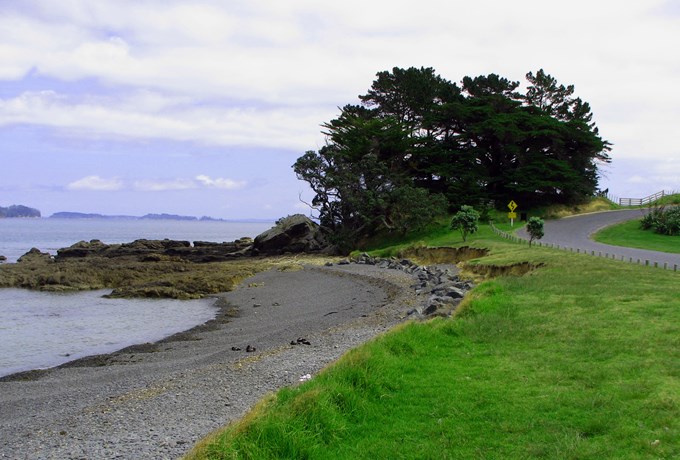Who is buried in the graves at Matatūahu Point?
It’s been a mystery for many years leading Robert Brassey, Auckland Council's Principal Specialist, Cultural Heritage, to investigate.
Often staff in the council's Heritage Unit must piece together a picture of what happened in the past, using only a few clues; the graves at Matatūahu is one of these cases.
It’s an informal local burial place with no cemetery records or plans and no remaining grave markers.
An unnamed grave, shown on an 1870s plan, is thought to be that of a crew member from the Julia, wrecked in May 1871 at Tokatū Point. Oral history records identify other burials on the Point, including that of Ngāti Raupō hapū leader Taiaho Porotaka (since reinterred) but a story told by Edgar Young, the son of James and Alice Young who moved to Tāwharanui in late 1898, has always been enigmatic:
“Dad told me it was a French warship putting up trig stations (surveying), round the 1900s. They went down (Kawau Bay) in the morning.
"My father and Mr Day were fencing up on the hill and in the afternoon they saw them sailing back up … they thought they must have taken the sail down because the next time they looked they couldn’t see them anywhere. Next day sailors off the warship came and asked them...
"I never asked Dad where they found them … they buried them on our point there, right against the boundary between us and Mrs Jones. Just up about 20 feet where you could dig a decent hole.”
Careful research and some lateral thinking confirms this story is mostly correct but the ‘French’ sailors were actually British. Four crew and an officer drowned on November 1904 when a whaleboat from HMS Penguin capsized in North Channel off Kawau Island.
“It’s nice when we can learn more about the history and significance of our special heritage places. In this case we have been able to identify what happened to the victims of the Penguin tragedy, an event that had long been forgotten” says Robert Brassey.
The work is part of a wider review of archaeological sites protected in the Unitary Plan.


